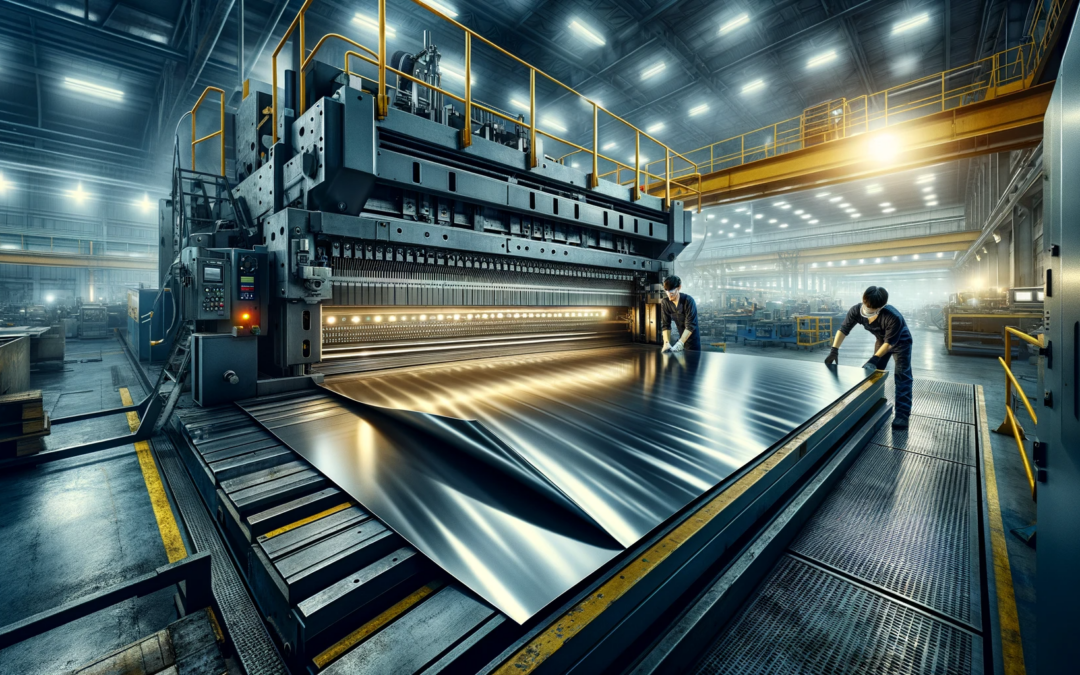Bending ultra-thin sheet metal is a crucial and complex facet of modern industrial processes. With applications ranging from aerospace to advanced electronics, mastering this technique is a major challenge for engineers and manufacturers. Handling these delicate materials requires not only in-depth technical expertise, but also knowledge of the latest technological advances. This delicate yet essential process requires unfailing precision, highlighting the importance of a rigorous and innovative approach to industrial manufacturing.
Deciphering the technical challenges of bending ultra-thin sheet metal
Material complexity on a microscopic scale
Ultra-thin sheet metal bending, often with thicknesses of less than 0.5 millimetres, presents unique challenges. These materials, although visually robust, react differently under stress than thicker sheet metal. The slightest inaccuracy in the bending process can lead to deformation or breakage, due to their increased sensitivity. Understanding their physical properties is therefore essential to prevent these problems.
Achieving unrivalled precision in manufacturing processes
In the context of large-scale production, consistency of quality and accuracy of bending are crucial. Minor deviations, such as a variation of a few micrometres in the bend angle, can lead to non-conformities in the finished product. This level of precision requires specialist equipment and rigorous manufacturing protocols. Operators also need to have a thorough understanding of the machines and materials they are working with, in order to ensure flawless production. With the advent of cutting-edge electronics, mastering this technique is a major challenge for engineers and manufacturers. Handling these delicate materials requires not only in-depth technical expertise, but also knowledge of the latest technological advances. This delicate yet essential process requires unfailing precision, highlighting the importance of a rigorous and innovative approach to industrial manufacturing.
Technological advances and adaptation of processes
Revolution in bending equipment for ultra-thin sheets
Recent advances in bending machinery have radically transformed the way ultra-thin sheet is handled. The latest generation of press brakes, equipped with digital controls and real-time feedback systems, now deliver unrivalled precision and repeatability. These machines can automatically adjust bending parameters, reducing errors and increasing production efficiency. This technological evolution means a significant reduction in scrap and an increase in productivity, optimising costs and production times.
The crucial role of computer-aided design in bending precision
The integration of Computer Aided Design (CAD) software into ultra-thin sheet metal bending has marked a decisive turning point. These tools enable precise modelling of the bending process, anticipating potential manufacturing problems before production even begins. Thanks to 3D simulation, engineers can optimise bending sequences, reduce trial and error times, and ensure strict compliance with design specifications. This computerised approach not only improves accuracy, but also fosters better communication and collaboration between the design and production teams.
Practical strategies for overcoming the challenges of ultra-fine folding
Best practices and operational adjustments
To improve folding quality, it is crucial to fine-tune production processes. This starts with a detailed analysis of the folding stages, identifying and eliminating potential sources of error. For example, rigorous control of temperature and humidity in the workshop can significantly reduce variations in material performance. In addition, the adoption of preventive maintenance protocols for equipment ensures optimum operation and prevents unscheduled stoppages, thus contributing to greater consistency in the bending process.
Training and key skills for operators
Specialised operator training is another crucial pillar. Given the complexity and precision required to bend ultra-thin sheets, operators need to have in-depth knowledge of the machines and materials. Ongoing training programmes, including modules on new technologies and industry best practice, are essential. This enables operators to keep abreast of technological advances and constantly improve their skills, ensuring high-quality results and effective adaptation to the industry’s ever-changing challenges.
Ultra-thin sheet metal bending remains an area where precision and innovation are constantly required. Mastering this technique goes beyond simply handling materials: it involves a synergy between cutting-edge technology, in-depth technical skills and optimised operational processes. Excellence in this sector is not only a question of overcoming technical challenges, but also of adapting and evolving with the industry’s growing demands.

